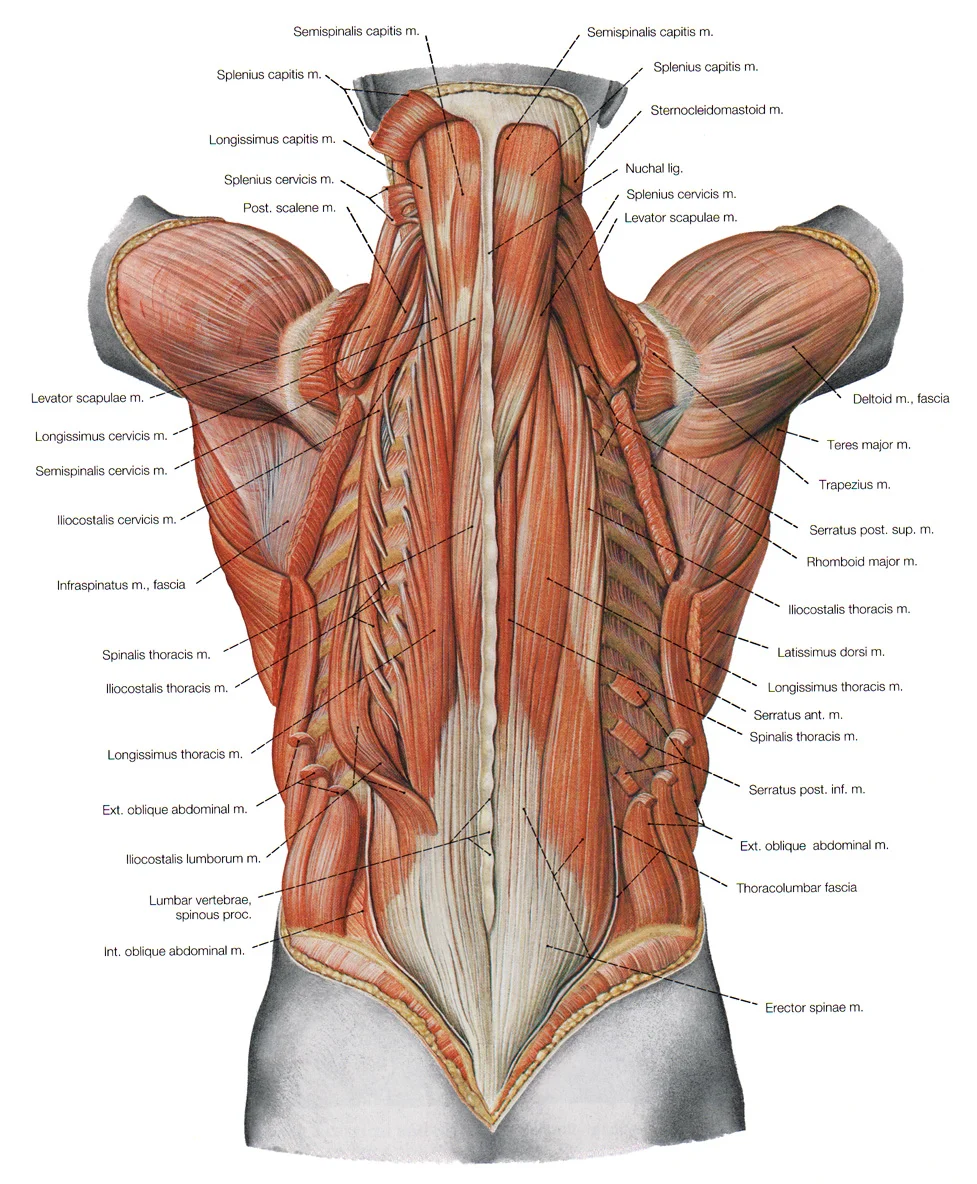Back Muscles
Human Back with skin covering all the internal structures.
Back pain has affected over 80% of the population and can cause chronic issues throughout a lifetime. Here is a brief overview of the back anatomy, this will help you understand why back pain can be caused by many different and complicated problems. (See Low Back Pain Conditions & Relief for more information on how Dr. Heppe can help you)
Your back consists of skin, fascia, 6 different layers of muscles, spine, nerves, arteries, & veins. Each part is divided into many different sections and each section is responsible for a different host of actions for the body. Today we are going to focus on the muscles in the back.
The skin and fascia cover all the muscles to help them stay together as one working unit. Beneath the skin and fascia are 6 layers of back muscles.
Layer 1: Latissimus dorsi & Trapezius (traps)
1st Layer of Muscles
This first layer consists of the Trapezius (traps) & Latissumus dorsi (lats). The traps and lats are responsible for moving the shoulder blade in all different directions.
Layer 2: levator scapula, rhomboid major, & rhomboid minor- all seen on the right side. they are directly below the trapezius muscle.
2nd Layer of Muscles
The second layer, located directly beneath the lats and traps, includes the levator scapula, rhomboid major and rhomboid minor.
The levator scapula and rhomboids get stretched while driving and working on computers/laptops/phones. These muscles need to be strengthened to prevent mid-back pain, shoulder pain, neck pain, and headaches
Layer 3: These muscles are the Serratus posterior superior, which are near the top ribs and the serratus posterior inferior, which are located along the lower ribs.
3rd Layer of Muscles
layer 3 continued: serratus anterior muscles which wraps around the back and goes into the ribs.
This layer consists of the serratus muscles. There is the serratus anterior, the serratus posterior superior, and serratus posterior inferior.
The serratus muscles attach to the spine and ribs. They help with breathing.
Weakness of these muscles can cause neck pain, shoulder pain, and difficulty with deep breathing.
4th Layer of Muscles
This layer includes the splenius capitis & cervicis muscles. They attach to the spine and skull bones.
These can get stretched and pulled after working on a computer or when looking down at your phone. Problems with these muscles cause upper back pain, neck pain, and headaches.
5th Layer of Muscles
This layer consists of the erector spinalis muscles, which include three groups- the illiocostalis, longissimus, and spinalis. These muscles go all the way from your head to your pelvis and can cause a lot of pain throughout the entire back.
These muscles are deep, easy to damage, and hard to exercise.
6th Layer of Muscles
This layer is the deepest of back muscles, meaning that they are closest to the spine. These muscles attach to each bone in the spine and can easily get hurt with simple motions such as sitting, going from sitting to standing, rotating, or bending over.
A small visual of all 6 layers of back muscles together in one picture.
TLDR: There are many muscles in the back. Each muscles is responsible for a specific action and has to work together with all the other muscles. When one muscle gets 'tweaked' it can cause a cascade of problems in the back.












